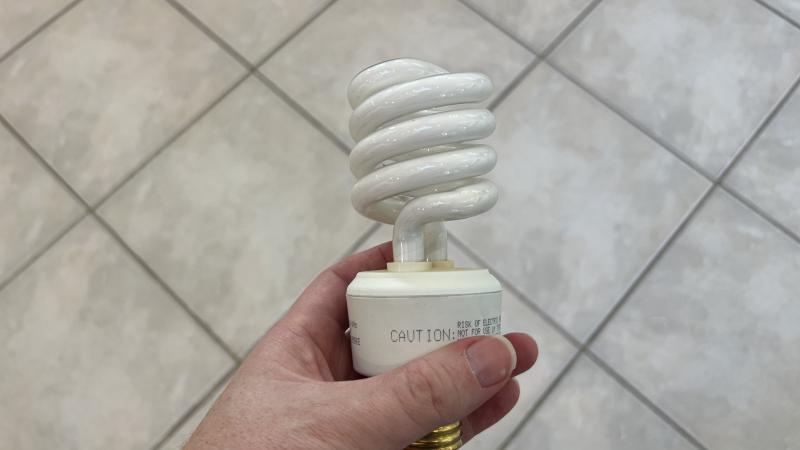EV mandates present many challenges for the American driver, from being "green" to being affordable
Besides high purchase prices and charging challenges, the emissions reductions and environmental impact of production are far from certain.
President Joe Biden wants two-thirds of all cars sold in the U.S. to be electric by 2032, and many state-level mandates will eliminate the sale of most gas-powered cars in a similar time frame. As much as the Biden administration and many Democratic governors want everyone to drive an EV, the vehicles have a number of shortcomings that suggest this isn’t going to be easy.
Not That Green
Federal EV mandates are part of a goal to reduce carbon dioxide emissions in the transportation sector. The degree to which a transition to EVs will accomplish that is far from certain. While the cars don’t produce emissions when they’re driven, they require 10 times the amount of minerals to produce than a gas-powered vehicle.
Writing in TechCrunch in 2021, Mark Mills, senior fellow at the Manhattan Institute, estimated that if the world were to transition half of all vehicles to electric — which would be 500 million EVs — it would require mining the same quantity of minerals that could produce 3 trillion smartphones.
That amount of mining requires a great degree of fossil fuels. All those minerals have to be mined, shipped and processed. According to a study by the Manhattan Institute, which Mills authored, there are many factors that determine how much carbon dioxide emissions come out of those processes. As there are no authoritative studies on that aspect, that leaves the amount of emissions reductions nearly impossible to determine. It is entirely possible that the manufacture of some EVs provide no reductions at all.
Purchase Price
According to Cox Automotive, a vehicle remarketing, digital marketing, and software company, the average purchase price of an electric car in July 2023 was $53,469, while the average price for a gas-powered vehicle was $48,334.
Proponents of the mandates have argued that the cost of electric vehicles are coming down, and that owners save money over time on fuel and maintenance costs.
By contrast, a Texas Public Policy Foundation analysis shows those savings would evaporate were it not for the true costs of the vehicles being hidden behind federal and state subsidies. Absent the support of taxpayers, the average price of an EV would rise by $50,000, according to the study, bringing it closer to $100,000 — twice that of the average gas-powered car.
While EVs have been coming down in prices, it’s uncertain how long that will last. Despite all the state and federal support, automakers are losing billions of dollars on their EV lines, and even Tesla is having trouble.
Bloomberg reported Wednesday that Honda and General Motors have scrapped a $5 billion partnership to build more affordable electric vehicles and compete with Tesla.
Automakers had invested billions to create their EV lines, expecting that sales would follow. Axios reported in July, based on data from Cox Automotive, that the nationwide supply swelled to 350%, which is a 92-day supply. Dealers have only about a 54-day supply of gas-powered vehicles, down from 70 days in past years.
Charging Challenges
A J.D. Power survey found growing dissatisfaction with public charging stations, including the time to charge, their location, inoperable chargers, and long lines. Long lines led to a public relations disaster for U.S. Energy Department Sec. Jennifer Granholm in September, when a staffer tried to save a spot in line with a gas-powered car, and the cops ended up getting involved.
Ford CEO Jim Farley was surprised to find out that 40 minutes of charge time on a Ford F-150 Lightning gave him only 40% of charge capacity.
The newest Tesla models can charge at the Tesla Superchargers in as little as 15 minutes, but with larger electric vehicles at slower charging stations, charging up to 50% can take hours. Many EV drivers do charge at home, but all this demand on the grid is another issue that will come from EV use.
The Texas Public Policy Foundation study concluded that the infrastructure costs to meet that demand is approximately $10,515 for the average EV. That study also noted there are a lot of factors that go into how much EV charging will impact the grid. Heavy charging demands in urban areas will require less infrastructure than those in rural territories, for example.
When EV owners charge their cars will also determine the impact, the study stated. If EV drivers are charging during evening hours when they get home from work, which are peak demand hours, it will risk exceeding the available electricity .
Range Anxiety
On a full charge, range estimates on EV brands go from as little as 100 miles to nearly 400 miles. Many factors can reduce that range, however, including whether the car is a hybrid or a fully electric vehicle.
High and low temperatures also shorten the number of miles an EV driver can go before having recharge. A 2019 AAA report found that EVs lose about 12% of their range when the temperature drops to 20 degrees Fahrenheit. If the EV drivers turn on their heater, the range loss increases to 41%. When the mercury rises to 95 degrees Fahrenheit, the vehicle loses 4% of its range. With the air conditioner running, the range loss is 17%.
The age of the battery can also cause range degradation. A 2019 report from Tesla found their batteries may lose about 10% of their range after 200,000 miles.
Driving in steep terrain can also reduce range. Combining these factors can ruin an EV driver’s day, as one Rivian driver in Wyoming discovered. Driving through mountainous areas of rural Wyoming on a cold day, he ended up having to get towed.
Battery Disposal and Fires
Electric vehicle fires have seen a lot of attention lately, but gas-powered vehicles are much more likely to catch fire than an EV, according to an analysis by AutoInsuranceEV. Hybrids have gasoline engines and an electric motor powered by a battery charged by the gas powered engine. According to AutoInsurance EV, those are the vehicles that catch fire most often.
However, when EVs of either kind do catch fire, they’re very difficult to put out. Lithium — the main ingredient in EV batteries — produces oxygen when it burns, so it helps keep the fire going. The only way to put out a burning EV battery fire is to put a lot of water on it.
When EV batteries survive until the end of their lives, they also present a disposal challenge. As the number of EVs on the road grows and ages out, the problem is expected to grow. Lithium batteries can be recycled, but the process is labor intensive and expensive.
Leo Raudys, CEO of Call2Recycle, a nonprofit that handles recycling logistics for dead batteries, told Wired in 2021 that battery recycling is not going to be profitable for everyone.
“That’s fantasy economics,” he said.
Automakers can't make people buy EVs, and they can only lose so much money. If sales lots continue to fill up with EVs people aren't buying, the thinking on mandates may start to change.
The Facts Inside Our Reporter's Notebook
Links
- President Joe Biden wants two-thirds
- state-level mandates
- require 10 times the amount of minerals
- Writing in TechCrunch in 2021
- study by the Manhattan Institute
- average purchase price
- owners save money over time
- those savings would evaporate
- Automakers losing billions of dollars
- even Tesla is having trouble
- Bloomberg reported
- Automakers had invested billions
- Axios reported
- survey found growing dissatisfaction
- Ford CEO Jim Farley
- a staffer tried to save a spot in line
- as little as 15 minutes
- range estimates on EV brands
- 2019 AAA report
- 2019 report on Teslas
- Driving in steep terrain
- he ended up having to get towed
- according to an analysis by AutoInsuranceEV
- put a lot of water on it
- the process is labor intensive and expensive
- battery recycling is not going to be profitable















